“New Year, New You” as the saying goes, and the Chinese, Vietnamese, and Koreans take this seriously when it comes to the Lunar New Year as it is the start of a brand new lunar year. It is believed that these festive traditions are essential to start the new year off on the right foot.
Don the Right Colour

Any Chinese and Vietnamese community would be covered in red decorations during the Lunar New Year period as the colour is seen as auspicious and said to bring good fortune and prosperity. This is why most Chinese and Vietnamese families are seen wearing red outfits during Lunar New Year celebrations.
For the Koreans, however, red is related to passion and is often only worn in sporting events. Instead of being draped in red, Koreans would often celebrate Seollal, their Lunar New Year, by wearing a traditional Hanbok with bright colours, as bright colours are said to symbolise hopes for a bright future.
If there is one taboo colour to steer clear from during the Lunar New Year it is black as it symbolises death and ill omen. White clothing among the Chinese and Vietnamese communities is mainly seen as a colour of mourning, particularly during funerals. However, if you really must wear that favourite white top it is admissible to wear it with other red accessories or clothing
Bringing the Bang
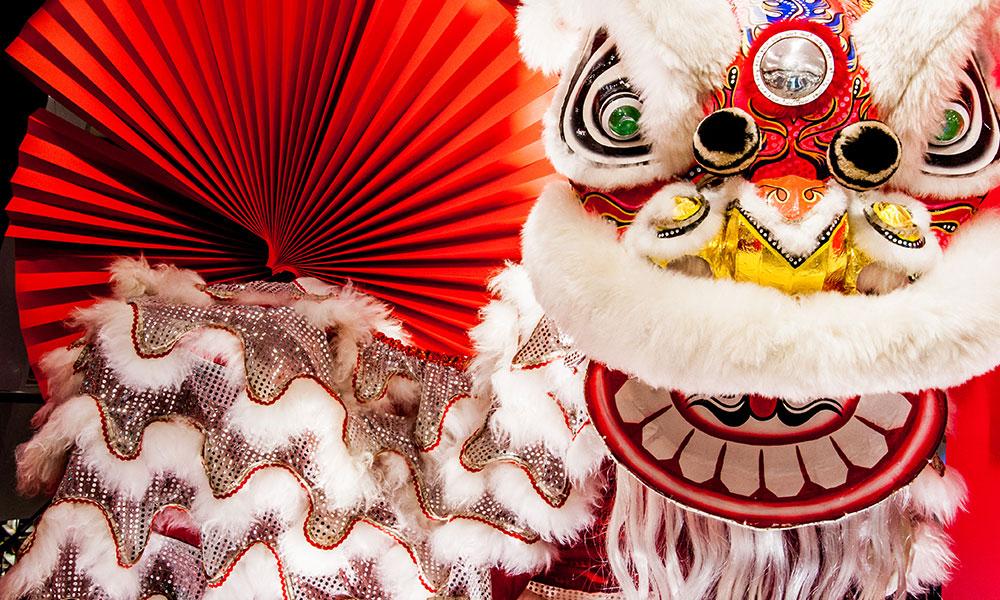
What does New Year’s Day have in common with the Lunar New Year? Fireworks. Lots of fireworks. The tradition, which can trace its origins back to ancient China, has to do with the belief that the loud ‘bang’ would scare away evil spirits that would otherwise spoil the fortunes of the new year.
Scare evil spirits away with the loud ‘bang’ of firecrackers.
To keep the tradition alive the Chinese created the ‘Legend of Nian’ folklore, but nowadays it seems you don’t need stories of legendary beasts to keep this fun tradition of igniting rockets alive.
Another tradition rooted in the belief of warding off evil spirits is the lion dance and the dragon dance. This tradition, which the Chinese, Vietnamese, and Koreans all share – each with its own unique design and dance routine – is seen as a symbol of power, wisdom, and good fortune.
Dragon dance – a symbol of power, wisdom and good fortune.
Cook Up Some Luck
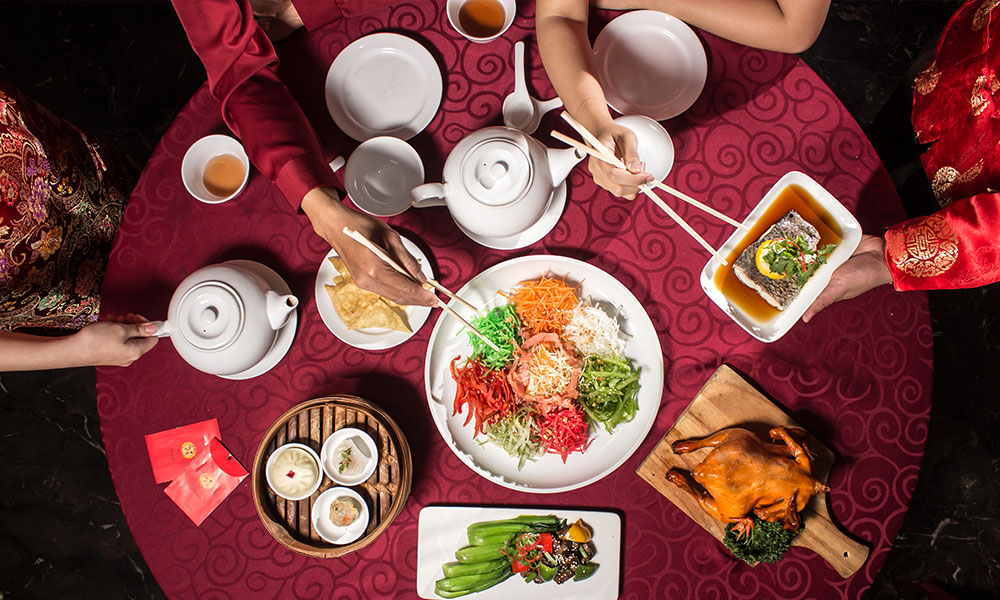
More than just the decorations and traditions, Lunar New Year festivities also extend onto the sort of food to prepare. The Chinese have a whole comprehensive list of food, dishes, and fruits that are symbolic of many auspicious aspects of the Lunar New Year from family unity to good fortune and wealth.
Family unity is the most important aspect of Lunar New Year, and for the Chinese roundness is symbolic of unity, which is why the all-important reunion dinner has to take place over a round table and oranges and pomelos are presented during the Lunar New Year.

In Chinese, the word for fish, 鱼 or ‘Yú’, sounds similar to ‘surplus’, which makes it a dish that symbolizes prosperity. Another popular Lunar New Year dishes is dumplings and spring rolls, which are wrapped and prepared to look like ingots of silver and gold respectively.
For the Vietnamese, there is xoi gac, a special sticky rice dish that is red in colour, which befits the Vietnamese tradition of using red as a symbol of happiness and prosperity.
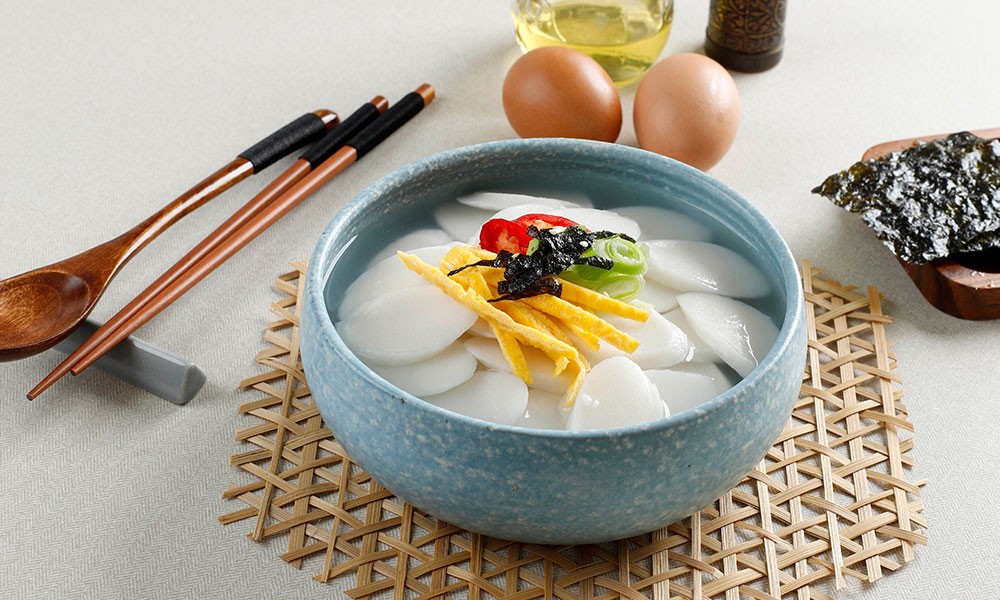
As Seollal is also symbolic of the day of everyone’s birthday, Korean families would enjoy a special rice cake in beef broth dish known as tteokguk, which symbolises happiness and good fortune.


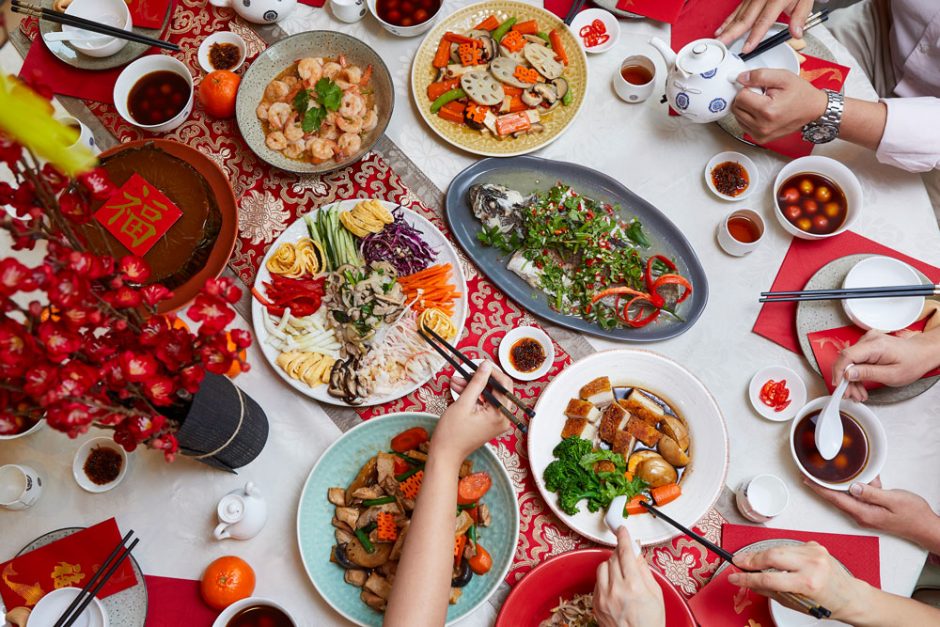
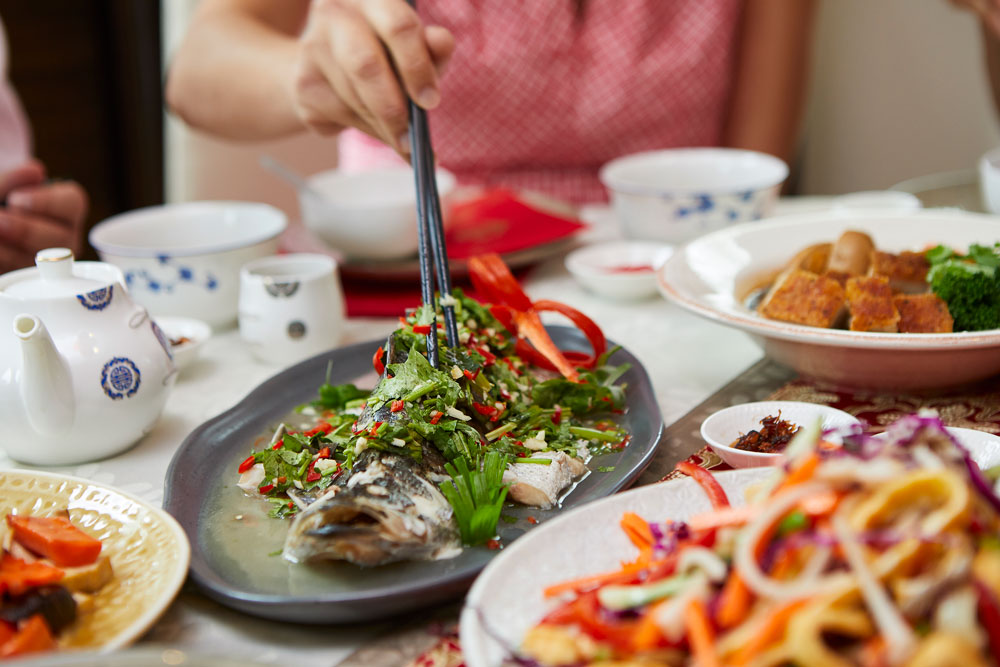



You must be logged in to post a comment.